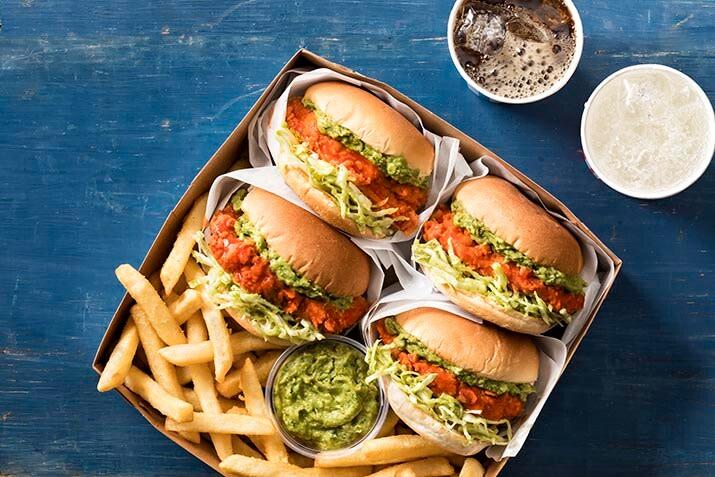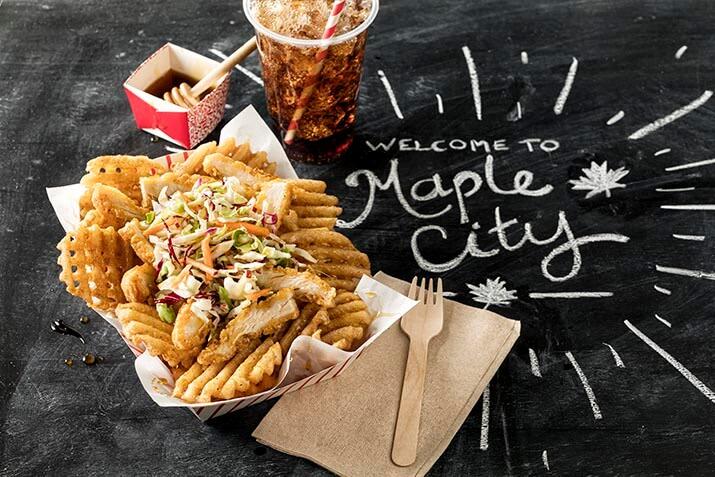News
The State of the Industry: Foodservice Operators in 2024
3/29/2024

As we move into spring, restaurant operators are gripping the wheel, navigating a landscape of both challenges and opportunities. While the industry shows signs of recovery from the pandemic's blow, new hurdles emerge, demanding agility and innovation. Here's a picture of the current state of the restaurant industry, focusing on the key issues you need to know.
The top challenge: Rising food costs
A recent report by Datassential highlights that rising food costs remain the most pressing challenge for restaurant operators this year. An overwhelming 72% of operators cite this as their primary concern.1 This issue surpasses even the rising labor costs (56%) and recruiting hourly staff (33%), which are significant but less critical than a year ago.1
Restaurant labor costs and employment trends: Interestingly, while labor costs are a challenge, finding labor is less of an issue compared to the previous year. This shift is evident in the foodservice employment data from the Bureau of Labor Statistics, which shows that employment has reached pre-pandemic levels – from 12.3 million in February 2020 to 12.4 million in December 2023.1 This resurgence is a positive sign but comes with the caveat of managing higher labor costs.
Managing back-of-house efficiencies: To address these dual challenges of high food and labor costs, operators need to focus on speed-scratch products. These products can enhance back-of-house (BOH) efficiencies and help manage labor costs effectively.
Simplot offers a broad portfolio of frozen potatoes, vegetables, avocado, fruit and grains products well known to reduce labor and cut prep times. Here are a few great examples:
Simplot® RoastWorks® Roasted Vegetables & Fruit
Roasting vegetables in house can take hours, tying up valuable oven space. RoastWorks®—the industry’s best-selling line of frozen roasted products—slashes prep time while delivering on-trend roasted flavor and presentation. Just heat and serve.
Simplot® Harvest Fresh® Avocados
No one gives you more ways to profit from Mexican Hass avocado than Simplot. Our Harvest Fresh® frozen guacamole, pulp, halves, dices and flavored spreads elevate your entire menu with added pricing power and frozen convenience.
Simplot Ready-to-Eat (RTE) Vegetables
If you’re using vegetables in cold items like salads, salsas and meal kits, Simplot RTE vegetables make it as easy as thaw and serve—no cooking required! Say goodbye to the time-consuming steps of cooking and chilling.
Balancing novelty and comfort in menu offerings
An exciting development is that 80% of consumers are looking forward to food and beverage trends in the New Year.2 This indicates a significant appetite for new and unique foods. Reinforcing this, Technomic found that 40% of consumers are more likely to visit restaurants offering new and unique flavors.3
High-end restaurants and consumer expectations: The demand for novelty, however, varies across different restaurant types. In higher-end restaurants, consumers seek more unique menu items. In contrast, at fast food, midscale, or fast casual restaurants, there's a greater preference for familiar menu items.2
Need for strategic menu innovation: For operators, this means a need for safe experimentation and innovation. Utilizing versatile and craveable ingredients can help strike the right balance between introducing new flavors and comforting the customers with familiar tastes.
Strategic takeaways for restaurant operators in 2024
Cost management: Focus on innovative solutions to manage rising food costs without compromising on quality. Frozen foods can be useful alternatives to fresh and reduce costly kitchen waste, too.
Labor efficiency: Invest in training and technology that enhances labor efficiency. Again, frozen speed-scratch products can be a game-changer in managing labor costs effectively.
Menu innovation: Adapt your menu based on your restaurant type and target audience. High-end restaurants should lean towards unique, trendsetting items, while others might benefit from integrating both novel and familiar dishes.
Consumer engagement: Stay attuned to changing consumer preferences. Engage with your customers through social media and feedback channels to understand their evolving tastes.
Sustainability: In an era where consumers are increasingly conscious about sustainability, consider how your restaurant can contribute to environmental conservation, be it through sourcing, waste management, or energy use.
Technology and data: Leverage technology not just for operational efficiency but also for data analytics. Understanding consumer behavior through data can help tailor your offerings more effectively.
Community and collaboration: Build a sense of community around your brand. Collaborate with local suppliers, host community events, and engage in local events to strengthen your brand's presence.
Health and wellness: With a growing focus on health, consider how your menu can cater to this trend without sacrificing flavor or uniqueness.
Flexibility and adaptability: Be prepared to pivot quickly in response to market changes, whether they're related to supply chain issues, consumer trends, or regulatory changes.
Staff training and welfare: Invest in your staff. Their skills, well-being, and satisfaction can directly impact customer experience and operational efficiency.
Make 2024 your best year yet
As we progress through 2024, the restaurant industry continues to evolve, presenting both challenges and opportunities. By focusing on strategic cost management, labor efficiency, menu innovation, and staying attuned to consumer preferences, restaurant operators can navigate these times successfully. Embrace these insights and strategies to not just survive but thrive in the dynamic world of foodservice.
1 Datassential, Table Stakes Report, 2024
2 Datassential, Food Trends, 2024
3 Technomic, Flavors Report, December 2023



